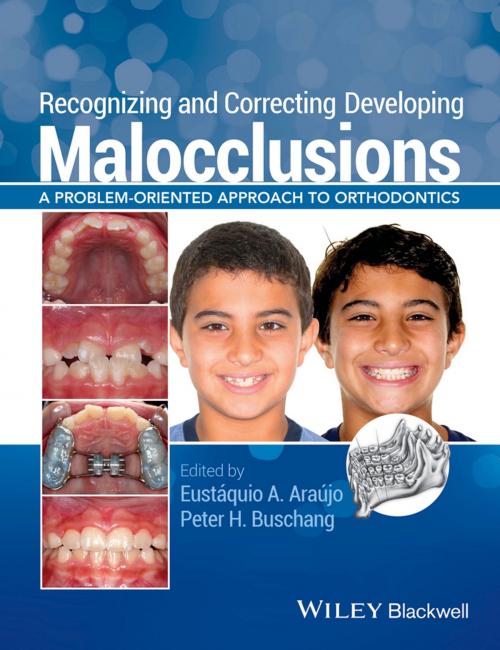Recognizing and Correcting Developing Malocclusions
A Problem-Oriented Approach to Orthodontics
Nonfiction, Health & Well Being, Medical, Dentistry, Orthodontics| Author: | ISBN: | 9781118925256 | |
| Publisher: | Wiley | Publication: | December 1, 2015 |
| Imprint: | Wiley-Blackwell | Language: | English |
| Author: | |
| ISBN: | 9781118925256 |
| Publisher: | Wiley |
| Publication: | December 1, 2015 |
| Imprint: | Wiley-Blackwell |
| Language: | English |
Recognizing and Correcting Developing Malocclusions: A Problem-Oriented Approach to Orthodontics provides an evidence-based approach to early treatment, an often-controversial topic. Based on decades of experience in clinical practice and education, Drs. Araújo and Buschang clearly present treatment protocols for mixed-dentition patients with various malocclusions and other orthodontic problems. Class I, Class II, and Class III malocclusions are covered extensively, along with eruptive deviations and open-bite malocclusions. The literature is comprehensively reviewed to ensure that the reader thoroughly understands the development, phenotypic characteristics and etiology of each type of malocclusion. Taking a problem-oriented approach, the authors provide detailed information for each case, develop comprehensive problem lists, and then provide evidence-based treatment solutions. The clinical focus of the text is ideal suited for private-practice clinician, with numerous references and academic underpinnings to ensure its suitability for orthodontic and pediatric dentistry residents.
- Focuses solely on mixed dentition orthodontic treatments
- Great variety of case studies—5 to 10 cases per chapter
- Each case is presented in the format of a problem list and evidence-based solutions
- More than 300 clinical photographs and radiographs
Recognizing and Correcting Developing Malocclusions: A Problem-Oriented Approach to Orthodontics provides an evidence-based approach to early treatment, an often-controversial topic. Based on decades of experience in clinical practice and education, Drs. Araújo and Buschang clearly present treatment protocols for mixed-dentition patients with various malocclusions and other orthodontic problems. Class I, Class II, and Class III malocclusions are covered extensively, along with eruptive deviations and open-bite malocclusions. The literature is comprehensively reviewed to ensure that the reader thoroughly understands the development, phenotypic characteristics and etiology of each type of malocclusion. Taking a problem-oriented approach, the authors provide detailed information for each case, develop comprehensive problem lists, and then provide evidence-based treatment solutions. The clinical focus of the text is ideal suited for private-practice clinician, with numerous references and academic underpinnings to ensure its suitability for orthodontic and pediatric dentistry residents.
- Focuses solely on mixed dentition orthodontic treatments
- Great variety of case studies—5 to 10 cases per chapter
- Each case is presented in the format of a problem list and evidence-based solutions
- More than 300 clinical photographs and radiographs















